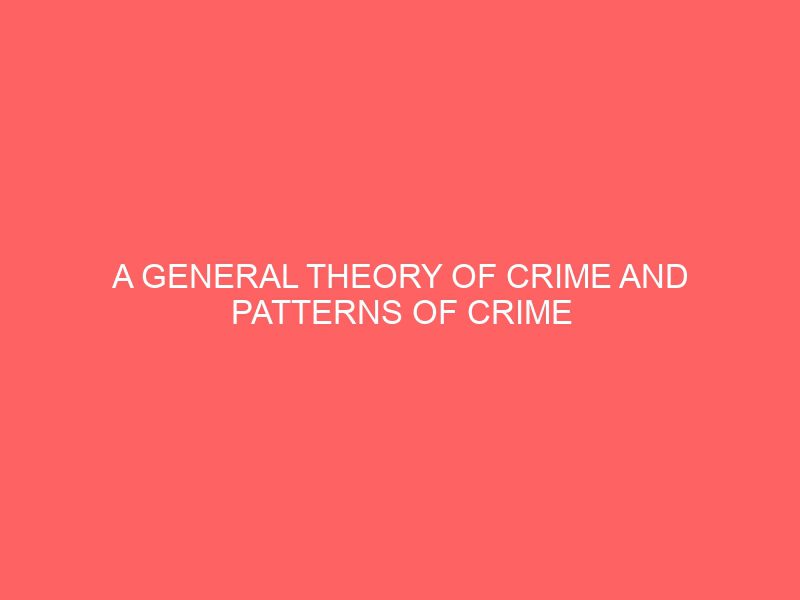Description
CHAPTER ONE:
INTRODUCTION
- Background of the study
This research is on a general theory of crime and patterns of crime in Nigeria: an exploration of methodological assumptions. Gottfredson and Hirschi (1990) claim that their general theory of crime has universal status, that it is valid across time and space. They note that cultural imbalance theories, which they define as those theories that apply only to a particular culture, dominate traditional comparative criminology. Advocates of such theories argue that each culture has its own definitions of crime as well as historically specific root causes of criminality and deviance. Hence, a theory explaining common criminogenic factors across cultures cannot be developed. Breaking from this reasoning, Gottfredson and Hirschi (1990) argue that:
cultural variability is not important in the causation of crime, that we should look for constancy rather than variability in the definition and causes of crime, and that a single theory of crime can encompass the reality of cross- cultural differences in crime rates. (Gottfredson and Hirschi, 1990:174-75)
Reliable and valid data concerning the patterns of crime and deviance in Nigeria are nonexistent. As a result, an evaluation of the general theory cannot be based on statistical analyses and tests of specific empirical claims and propositions within the theory. Rather, a general critique is offered which analyzes how well the theory’s assumptions and logic fit the contexts and patterns of crime in Nigeria. This article argues that the claim to universality is unsubstantiated for two reasons: (a) the variety of crime in Nigeria makes it highly unlikely that one explanation fits all (except at a level of abstraction that cannot distinguish forms of behavior and, hence, does not have a defined dependent variable); and, more important, (b) the basic concepts employed in the theory —force, fraud, opportunities, social consensus, deviance, prudence, self-control — are saturated with culturally specific meanings. Having been expelled from the theory by fiat, cultural imbalance creeps back in, like Robert Frost’s fog, on many little definitional feet through the back door. To make this argument, three general categories of crime in Nigeria (normal, political-economic, and riotous)1 first will be outlined. Second, the theories and explanations normally associated by researchers and pundits will be evaluated with each type of crime, and whether Gottfredson and Hirschi’s (1990) theory is capable of explaining the three types of crime will be examined. Last, some underlying limitations of the general theory will be identified, and an integrated approach to the study of crime will be called for.
RESEACH QUESTION
- Can the general theory of crime explain the patterns of crime observed in Nigeria?
- What can it explain and where does it fail?
- Which of its claims are more universalistic and which reflect the contexts from which it was developed observations of American crime and delinquency?
- In short, do the assumptions and logic of the general theory, when examined in the context of a developing country (Nigeria in this case), support a claim to universality?







